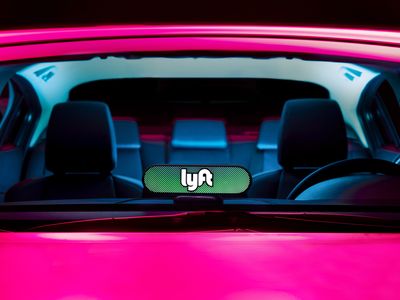
We’ve all been there: you land at an airport, book an Uber to your hotel, only to find 20 identical black Honda CR-Vs waiting when you get outside. Which one is yours? Or it’s late, you’re leaving the club with a buzz, and inadvertently leap into back of the wrong Toyota Camry. Sure, you could check for the right license plate number, but who has time for that nonsense? What you really need is a device you control to guide you into the right backseat. Meet Beacon, Uber’s first foray into hardware
The Beacon is essentially a glowing, plastic Uber logo that drivers can affix to the inside of their windshields. It’s Bluetooth-enabled, so after a driver accepts your ride request, a prompt will appear in your app that asks you to choose a specific color. If you choose green, the driver’s Beacon will glow green. Choose magenta, it will glow magenta. Either way, when he arrives at your destination, you’ll know it, no guesswork needed.
“You can match the license plate, you can match the make and model,” Nikhil Goel, product lead on the Beacon project, told me. “But this is kind of another tool we’re giving you to personalize your ride.”
I got to play with a Beacon yesterday at Uber’s New York City headquarters. Goel showed me how moving the slider in the app to select the right color instantly corresponded to the color of the Beacon. The effect was very cool, but it remains to be seen how well the color projects in darkness and bad weather conditions.
Beacon is the offshoot of Spot, a product pilot launched by Uber in Seattle almost a year ago. In an effort to eliminate awkward vehicle mixups, Uber provided its Seattle drivers with long, thin LED lights to attach to the inside of their windshields. Riders could control the color of the device so they could better identify their drivers. Uber found that Spot reduced the need for riders and drivers to contact one another and lowered cancellation rates in tricky pickup locations. The positive feedback convinced Uber to take it to the next level.
“Knowing that Spot was well-received in Seattle, we set out to design new and improved hardware,” said John Badalamenti, senior design lead at Uber. “We knew we had to design this to be seen at night, being very sensitive to the installation process, etc. Really the goal was to develop something that we could scale.”
That means the Beacon had to be inexpensive enough to mass-produce that Uber could afford to distribute them to all 1.5 million drivers worldwide without breaking the bank. (Although, given Uber’s $68 billion valuation, it’s hard to see how that could happen.) But it also needed to look familiar, which was why Uber designed the Beacon to look like its new logo.
“If you’re familiar with the environment in the car, it’s a very sensitive situation,” Badalamenti said. “This is an environment where subtle design detail gets lost and bold design really wins.”
Uber considered every design detail. That included ensuring that the Beacon wasn’t flush with the windshield, but instead floated a few centimeters away from the glass so drivers could see the reflection of the color their rider picked. The Beacon’s color can also be customized to correspond with certain events, like Pride Week or a sports victory. The device is wireless, and can operate for up to 20 hours on one charge.
To start out, Uber will be distributing its new Beacon gadgets to drivers in five cities: Miami, Nashville, Denver, Belfast, and Newcastle. Drivers will be invited to secret community meetings, where they will receive their Beacons at no cost, charging equipment included. The devices will be rolled out to more cities throughout 2017, with the goal of making them “ubiquitous” by the end of the year, Goel said.
/cdn0.vox-cdn.com/uploads/chorus_asset/file/7466095/Lyft_Amp_05.jpg)
The Beacon may look a little familiar to those who follow closely the ride-sharing industry. That’s because Lyft recently unveiled its own candy-colored device called the Amp. The LED device, which attaches magnetically to the dashboard, is designed to both prevent those awkward car mix-ups with passengers and replace the company’s iconic furry pink mustache logo.
Unlike the Beacon, the Amp has two LED displays, one facing out and the other facing inside the car. Messages can be displayed on either screen, such as “Welcome [your name here].” Surprisingly, Uber decided to go with a device that infringes less on your privacy.
Both companies anticipate rolling out their devices in a limited number of cities before New Year’s Eve, when the confluence of ride-sharing and drunk passengers is at its peak. Given the number of devices ride-sharing drivers have attached to their dashboards these days, the idea of taking some of that screen-glow and projecting out into the real world seems like a fair deal.
[Source:-The Verge]
